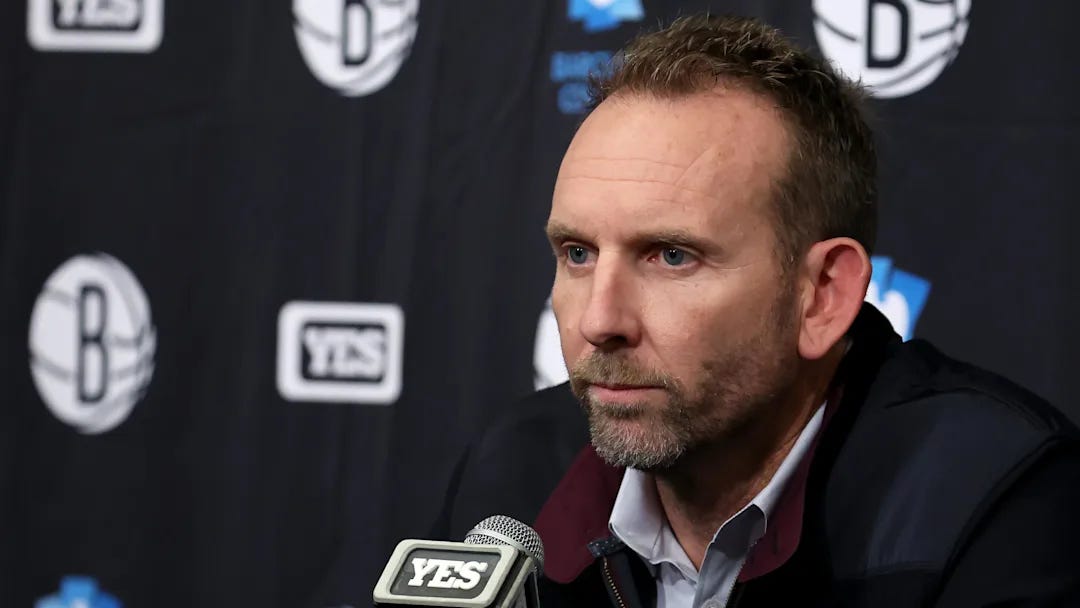Will Nets Adjust Building Approach For Modern NBA Era?
The basketball revolution is over. The analytics experts won.
Winning NBA teams of course still require superstar talent to create offense with their individual skills, plus defenders and rebounders and the like. But the ultimate difference-maker of the modern game is three-point shooting prowess. The proof is in the numbers.
Of the league’s top 10 three-point shooting percentage clubs, only Phoenix has a losing record, and figuring out why the Suns have crumbled to that extent might require years of study. The honor roll list otherwise includes five of the top seven teams overall, including the Eastern Conference’s 1-through-5 seeds plus Western Conference-leading Oklahoma City. The converse is also true; the only bottom 10 bricklayer with a winning record is Houston, coming in at No. 21 in three-point marksmanship.
Obviously, Brooklyn (25-52) is one of the teams that makes the top half possible, to regurgitate an old joke. Their ugly 34.4% three-point percentage this season ranks 26th in the league. Thursday night’s 105-90 defeat to visiting Minnesota—where if you took away Dariq Whitehead’s 5-for-9 outing off the bench, the Nets’ three-point rate was a vomitous 22%—was the 27th time this season they shot below 31% from behind the arc.
Drilling down, only four members of their current roster, including all three two-way players, are shooting it over the league average of .360. Tyrese Martin, a two-way convert during the season, is barely over the bar at .361. Maxwell Lewis and Whitehead, who have combined to play 32 games for Brooklyn this season, are two of the other “outliers.” That leaves Cam Johnson, who, at 39%, remains the team’s only legitimate NBA caliber shooter.
(Note: For those who may have thought Ziaire Williams, who has had some hot streaks from deep since the All-Star break, would qualify for such minimal acclaim, nope—his three-point percentage even during that abbreviated period didn’t make the league average cut.)
One could argue that Brooklyn’s lack of playmakers, especially after all their injuries, contributed to the substandard shooting accuracy. However, I would counter that the Nets under Head Coach Jordi Fernandez have done a remarkable job in generating good looks through ball and player movement, as evidenced by their 19 three-point attempts per game this season with over six feet of room to their nearest defender, which is a tick above the league median, and their third-most catch-and-shoot 3s per game, per NBA.com. However, the team’s conversion rate on both of those shot categories is ranked 27th in the league.
In other words, no excuses. This simply is a gang that can’t shoot straight.
That tracks with the first rebuild under Nets General Manager Sean Marks, when then Head Coach Kenny Atkinson pressed for a quantity-over-quality approach to his team’s three-point shot share. Only when the group collectively hit on a league average rate during the 2018-19 campaign (while still hoisting the fifth-most 3s per game) did Brooklyn start seeing better scoreboard results.
The time frame whereby Marks can help the franchise turn the three-point percentage numbers around again, be it this offseason or the next, will determine the length of the Nets’ residence in Lottery Land. What I hope that means for this summer is that Marks will elevate a prospect’s shooting ability in his Draft evaluations. Measurables such as wingspan, speed, and vertical leap are all fine characteristics that are useful in the establishment of NBA success, but get me some players who can efficiently put the ball in the basket too.
That hasn’t always been a top priority among league executives. Look at the bottom of the first round in the 2020 NBA Draft. Twenty-five teams passed on Payton Pritchard, and 29 on Desmond Bane for some combination of size/age/athleticism biases. Both of them are now valuable pieces on NBA playoff teams. It happens almost every year, with Philadelphia’s Jared McCain dropping to No. 16 in a relatively weak 2024 class. He was lighting it up during his 23 games pre-injury.
Marks historically has given three-point shooting a bit of a short shrift in his top-40 drafting decisions. It was always “best player available and let the coach figure it out.” He’s taken three lobs-and-blocks centers (Jarrett Allen, Nic Claxton, and Day’Ron Sharpe), a pair of European forwards who couldn’t cut it in the NBA (Dzanan Musa and Rodions Kurucs), a volume scorer (Cam Thomas), and an assortment of forgettable second rounders who didn’t or haven’t yet panned out. I would say that Marks’ first pick, Caris LeVert in 2016, was the only one of his that carried a healthy three-point shooting percentage on his resume upon his NBA arrival, while his 2023 selections Noah Clowney and Whitehead might just yet blossom into consistent shooters.
Of course, some players are able to make dramatic improvements in their shooting efficiency as they develop in the pros. LeBron James didn’t beat the league three-point average until Year 9. But having that skill in hand as one enters the league is a decided advantage these days. Call me crazy, but I like Kon Knueppel (Duke) over Kasparas Jakucionis (Illinois) and Tre Johnson (Texas) over VJ Edgecombe (Baylor), assuming the Nets land outside the top four picks in the Lottery. That isn’t what the consensus thinks.
As this miserable Nets season winds down, the fans’ focus can finally start shifting to the future. With Brooklyn owning four other picks in the top 36, Marks will have more opportunities to add players who fit in the new world order. One or more might come from overseas, where the reputation for fundamental skill development, including shooting, generally exceeds that of the college pool. We’ll see soon enough if Marks can execute his dives pursuant to what the sport now demands.

